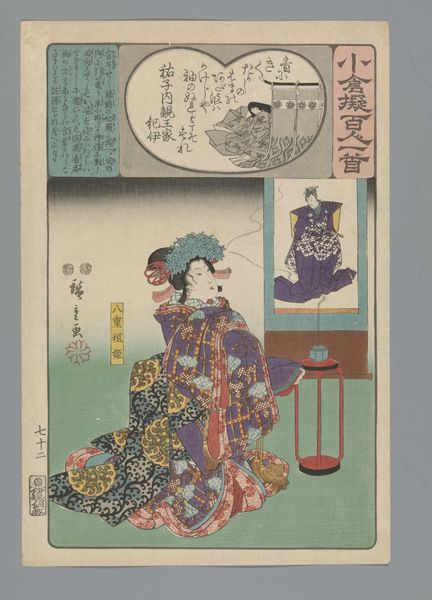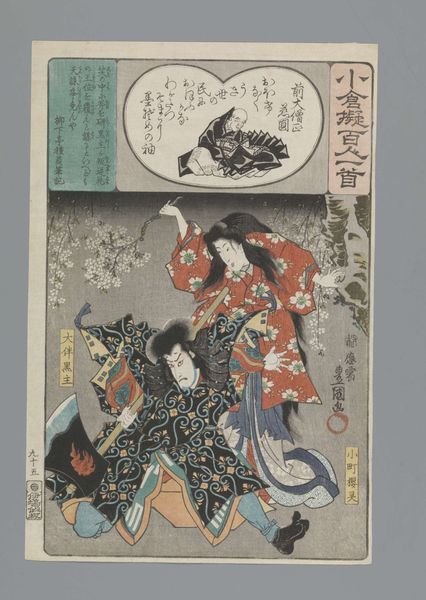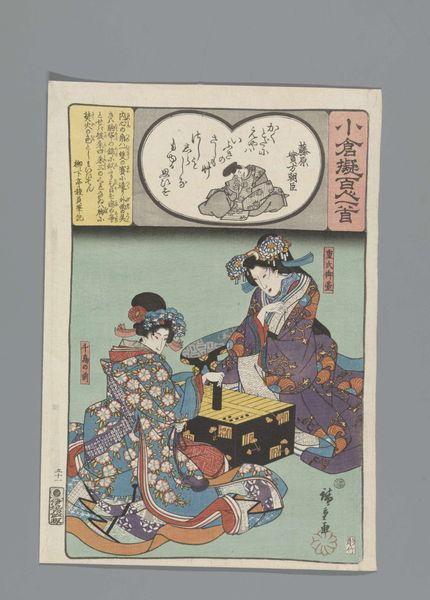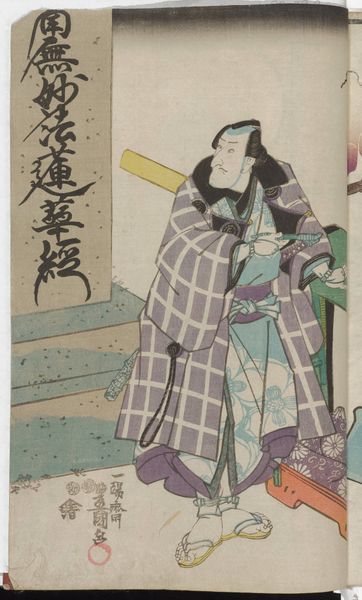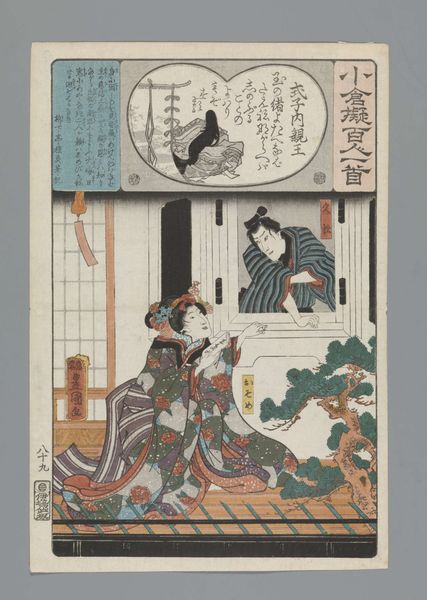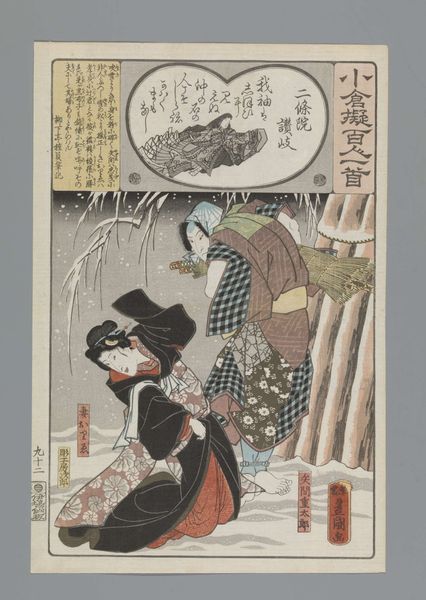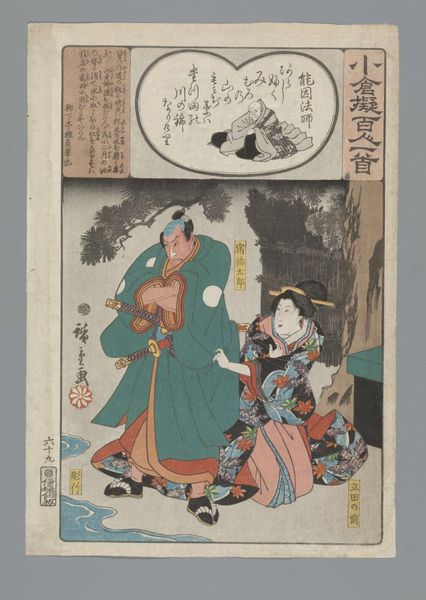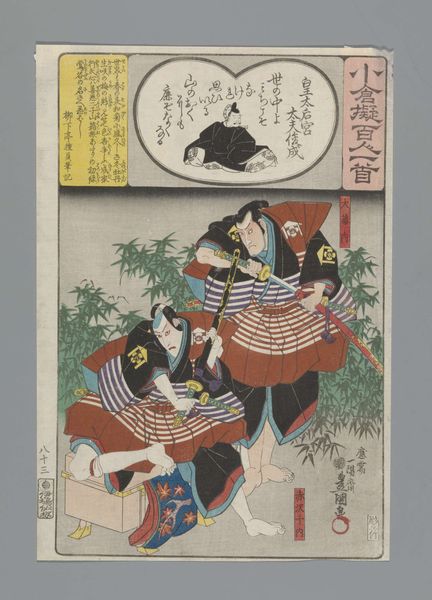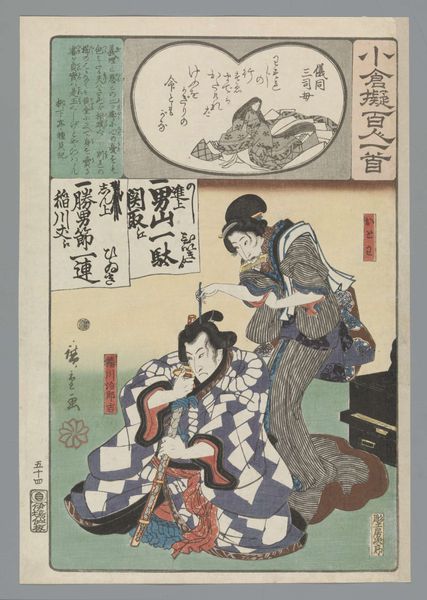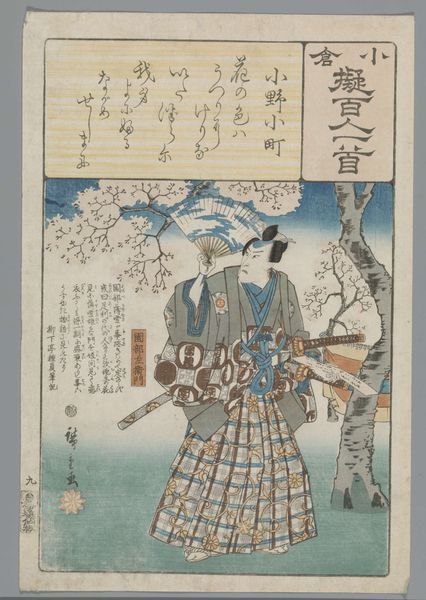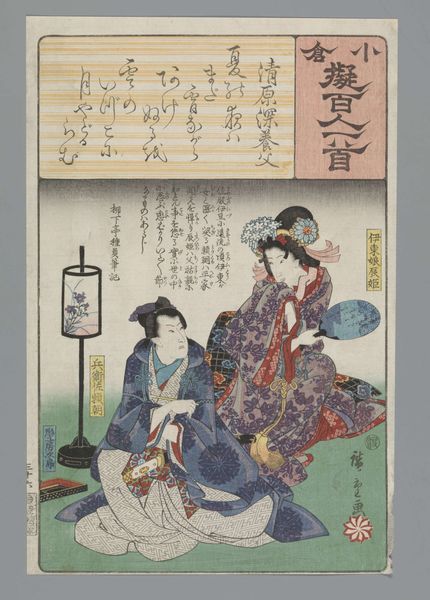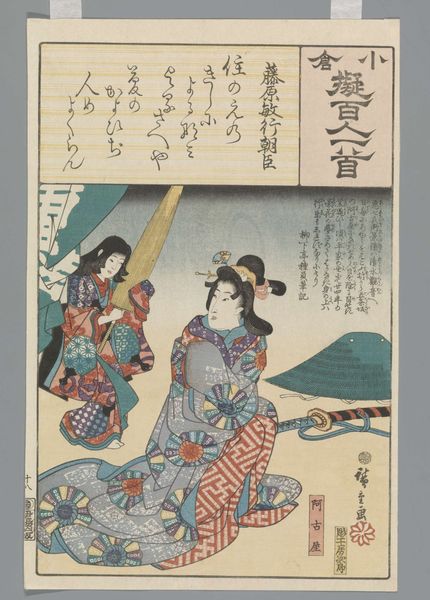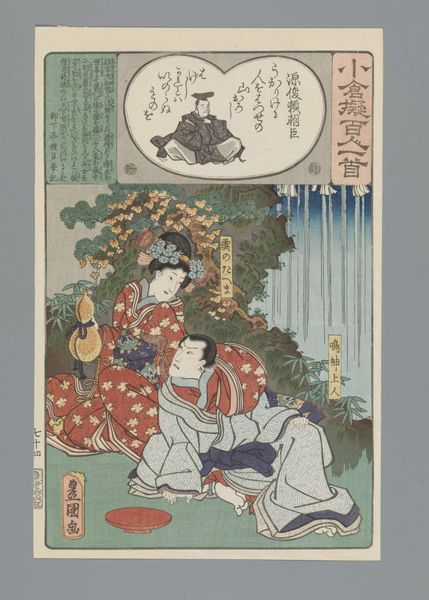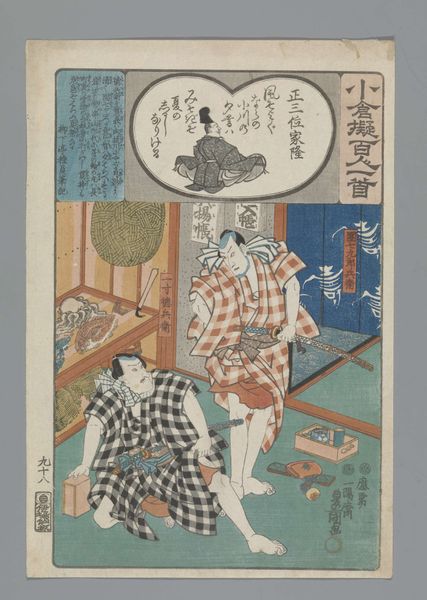
print, woodblock-print
#
portrait
#
narrative-art
# print
#
asian-art
#
ukiyo-e
#
figuration
#
woodblock-print
#
history-painting
Dimensions: height mm, width mm
Copyright: Rijks Museum: Open Domain
Curator: Utagawa Kunisada's woodblock print, titled "Ogura Imitation of the One Hundred Poems", crafted around 1846, offers a captivating glimpse into Japanese artistic traditions of the time. It’s currently housed here at the Rijksmuseum. Editor: It has a certain stillness. The subdued palette creates a serene, almost contemplative mood, even though there appear to be several figures depicted, seemingly engaged in…something? The layering and visual cues create a striking tableau, but what exactly is it showing? Curator: The work belongs to the Ukiyo-e tradition, literally translated as "pictures of the floating world." These prints were incredibly popular among the merchant class and often depicted scenes from popular culture, including kabuki theater, courtesans, and landscapes. Editor: Ah, kabuki makes sense! I recognize that distinctive makeup, the dramatic flair of the costuming, those exaggerated expressions and posturing. But tell me, how does the poetry fit in? The title refers to One Hundred Poems. Curator: The print alludes to "Ogura Hyakunin Isshu", or One Hundred Poets, One Poem Each, a famous anthology of waka poetry. Each print in this series features a poet or a scene related to one of the poems. This interweaving of poetry and portraiture served as an artistic, sometimes subversive commentary, that spoke volumes on class, love, honor, gender. Editor: The symbolic layering is exquisite! Look at the heart shape encompassing the poet's likeness within the scene – like visual poem in itself. The figures, the dress, the subtle script... it creates a microcosm reflecting much larger narratives, almost archetypes. I get such a feeling of cultural memory imbued in these forms. Curator: And this connects to how ukiyo-e prints challenged rigid social structures. Though these prints appear ornamental and decorative on the surface, they acted as radical platforms offering political criticisms, discourses on forbidden desires, gender bending roles and challenging views on class. They used symbolism to cloak and transmit their progressive and incendiary messages. Editor: Precisely! This combination of symbolic encoding and overt representation offers a wealth of meanings. It’s so deeply embedded in a cultural narrative, each element becomes weighted, carrying immense historical value beyond aesthetics alone. It compels me to consider the cultural frameworks governing artistic production and spectatorship back then. Curator: Understanding this piece and its time requires situating it within complex social, political, and gendered contexts, but more broadly it serves as a fascinating example of how art becomes an integral element in challenging hegemony. Editor: A fascinating blend of overt spectacle and intricate symbolism.
Comments
No comments
Be the first to comment and join the conversation on the ultimate creative platform.
